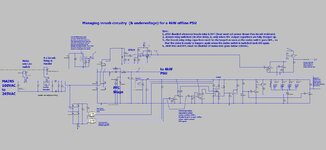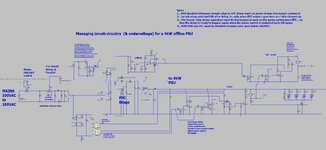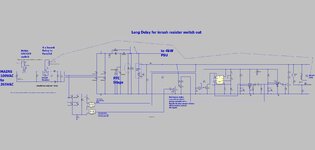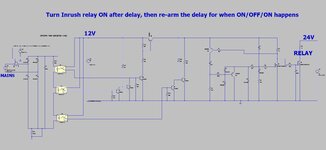cupoftea
Advanced Member level 5
Hi,
Doing a 4kW offline PSU with inrush management. The attached seems to be the smallest circuitry that can do it all in hardware. (LTspice sim and jpeg schem)
All it has to do is turn the inrush relay ON after a delay after power up. Also, to re-arm the delay, ready for an ON/OFF/ON restart. Also, to make sure the inrush relay doesn’t unwantedly turn off due to the 24V internal PSU powering down due to undervoltage.
Can you think of a lower component count way?
Doing a 4kW offline PSU with inrush management. The attached seems to be the smallest circuitry that can do it all in hardware. (LTspice sim and jpeg schem)
All it has to do is turn the inrush relay ON after a delay after power up. Also, to re-arm the delay, ready for an ON/OFF/ON restart. Also, to make sure the inrush relay doesn’t unwantedly turn off due to the 24V internal PSU powering down due to undervoltage.
Can you think of a lower component count way?



